- News
- Reviews
- Bikes
- Components
- Bar tape & grips
- Bottom brackets
- Brake & gear cables
- Brake & STI levers
- Brake pads & spares
- Brakes
- Cassettes & freewheels
- Chains
- Chainsets & chainrings
- Derailleurs - front
- Derailleurs - rear
- Forks
- Gear levers & shifters
- Groupsets
- Handlebars & extensions
- Headsets
- Hubs
- Inner tubes
- Pedals
- Quick releases & skewers
- Saddles
- Seatposts
- Stems
- Wheels
- Tyres
- Tubeless valves
- Accessories
- Accessories - misc
- Computer mounts
- Bags
- Bar ends
- Bike bags & cases
- Bottle cages
- Bottles
- Cameras
- Car racks
- Child seats
- Computers
- Glasses
- GPS units
- Helmets
- Lights - front
- Lights - rear
- Lights - sets
- Locks
- Mirrors
- Mudguards
- Racks
- Pumps & CO2 inflators
- Puncture kits
- Reflectives
- Smart watches
- Stands and racks
- Trailers
- Clothing
- Health, fitness and nutrition
- Tools and workshop
- Miscellaneous
- Buyers Guides
- Features
- Forum
- Recommends
- Podcast
TECH NEWS
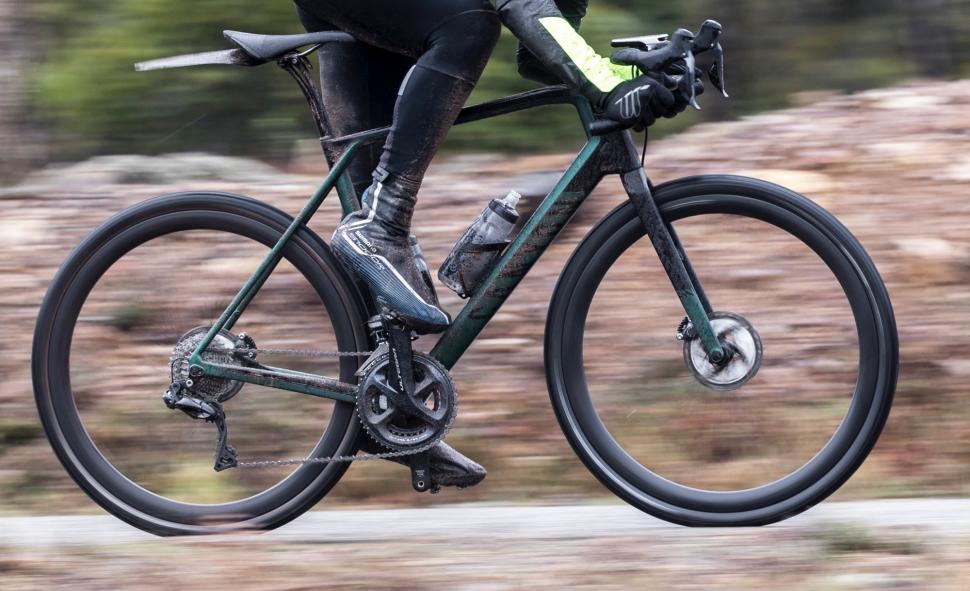 Canyon launch 2018 - 21.jpg
Canyon launch 2018 - 21.jpgCanyon launches radical Grail gravel bike
Canyon has revealed a completely new gravel/adventure bike called the Grail which features a radical double-decker handlebar/stem combo called the Hover Bar that’s designed to improve comfort and control.
There are two carbon-fibre versions of the Grail frame in several different builds (details down below), with an alloy option coming later.
First, let’s take a look at what Canyon is calling its Hover System – the means of providing comfort over rough roads, gravel, dirt tracks… It comprises three elements:
• The Hover Bar
• VCLS 2.0 seatpost
• Tubeless tyre/wheel system
Let’s go through them.
The Hover Bar
The Hover Bar is bound to provoke strong reactions. Hell, people get irate when Snapchat is redesigned so some are going to be apoplectic with the design of this double-decker handlebar/stem. Here’s the rationale…
When fitted to your bike, a standard handlebar flexes least in the areas closest to the stem, right? Think about how little flex you can get by pushing down on the top of the handlebar compared to the amount you can get by pushing on the drops.
“The top section, where you want to put your hands while cruising, is the least compliant part of a conventional system,” says Canyon product engineer Daniel Heyder, who worked on the Grail. “If I’m going down to the drops I want a stiff cockpit, I want to have good control, and that’s not existent on a conventional system. We’ve turned this whole thing around and made the Hover Bar compliant on the tops and stiff on the drops.”
Canyon has done this by moving the location of the stem relative to the tops of the handlebar. Or, you can think of it another way: Canyon has added a top deck to the handlebar that's not connected directly to the stem. It might take a second to get your head around what’s actually going on here (the pictures explain it better than any written description). It’s the lower deck that connects to the stem, while the top section is specifically engineered to be compliant.
“This Flex Area exploits carbon’s elastic properties to gently deflect and absorb chatter and vibrations being transmitted through to the rider’s body,” says Canyon.
Of course, every new innovation in cycling needs a statistic; that's the world we live in! Canyon says that the top section of the Hover Bar offers seven times more vertical deflection than the brand’s H31 Ergocockpit.
The top deck is oval in cross section except for a far flatter strip in the centre. A big sticker warns you not to put heavy loads here but you needn’t worry that it’s not strong enough to take your weight when cycling. Canyon says it has been tested way beyond the levels required for standard handlebars.
Canyon also says that the Hover Bar is just 120g heavier than a conventional handlebar and stem setup (more on weight in a bit) so it’s much lighter than a full-on suspension system, and there’s obviously no need for additional maintenance.
VCLS 2.0 seatpost
The Grail – so-called because Canyon reckons it has been successful in its quest for speed and comfort, stability and agility – uses existing technology in its VCLS 2.0 seatpost.
If you’ve not come across this design before, the seatpost is actually made from two separate D-shaped sections that sit alongside one another and are joined only at the clamp. It’s a leaf spring system that provides comfort while allowing the saddle tilt to remain constant.
The clamping point isn’t at the top of the seat tube, it’s positioned well down in the frame to increase the effective bending length of the VCLS 2.0 seatpost. Canyon reckons that this means you can get (stat alert!) 15% more vertical deflection than you’d otherwise have.
“The simple synthetic insert and set screw construction [of the clamping system] is not only 15g lighter than conventional clamps, it also offers a far more secure hold and is less prone to water and dirt infiltration thanks to the upper rubber seal,” says Canyon.
Wheels and tyres
The wheels and tyres are always central to determining a bike’s comfort and all Canyon Grails have rims with a minimum 22mm internal width and 40mm-wide Schwalbe G-One Bites (there’s clearance for 42mm tyres). Both the front and rear wheels are held in place by 12mm thru axles.
Find out about Schwalbe’s G-One Bite tyres here.
Both the rims and the tyres are tubeless so you can run lower pressures to provide extra comfort without running the risk of pinch flats.
“G-One Bite tyres specced across the range were developed by Schwalbe with direct feedback from Canyon testers and raise the bar in combining high levels of traction and low rolling resistance without compromising the suppleness desired when tackling new terrain,” says Canyon.
Geometry
“Geometry is the soul of the bike,” says Canyon's Daniel Heyer, and we couldn’t agree more.
You can have all the clever features you like, if the geometry isn’t right you can forget it.
Now, we talk on about stack (the vertical distance from the centre of the bottom bracket to the top of the head tube) and reach (the horizontal distance between those two points) a lot here on road.cc because those figures are vital to understanding a bike design. However, those measurements don’t really work with the Grail because your ride position is affected by the Hover Bar where the top deck is about 65mm higher than the bottom deck. Measuring to the top of the head tube doesn’t tell you a lot in this case.
With that in mind, Canyon has come up with what it calls Stack and Reach+. It's a tad irritating that we need a new system but it's simple to understand. Rather than measuring to the top of the head tube, Stack and Reach+ measures from the bottom bracket to the centre of the top of the handlebar.
If you divide the Stack+ measurement by the Reach+ measurement, the figure you get is fairly close to that of Canyon’s Sport geometry which features across its Endurace endurance road bike range. The front end of the Grail is actually about 10mm lower for a given size “creating an active riding position that’s still comfortable when racking up big miles over rough surfaces”, according to Canyon.
You do get some height adjustment on the Hover Bar, although it is limited to 15mm. If you want to drop the bar down, the top cap stays in the same place to maintain the continuous line from the top tube.
Getting the geometry right is difficult on a bike that could be ridden on everything from tarmac to singletrack. Different terrains and surfaces have different demands.
Canyon has given the Grail a long wheelbase to provide plenty of stability so that the bike can hold its line over rough ground, to create enough clearance for wider tyres and to eliminate the risk of toe overlap. The medium sized model, for example, has a 1,029mm wheelbase – about 40mm longer than you get on the Endurace endurance road bike.
All other things being equal, a wheelbase of that length would mean a compromise in agility, so Canyon specs short stem lengths to counteract that effect. Although the stem section of the Hover Bar looks long, the distance that the top of the bar sits ahead of the steering axis is short – 75mm on the medium sized model.
The Grail is available in seven different sizes, the five larger ones coming with 700C wheels and the two smaller ones fitted with 650B. Canyon reckons that this allows it to create a uniform fit, performance and ride character across the range.
Weight
As mentioned earlier, there are two carbon-fibre models on offer, the CF SL with a claimed frame weight of 1,040g (medium sized frame) and the CF SLX with a claimed frame weight of just 830g.
Canyon reckons that this makes the Grail CF SLX the lightest gravel frame out there. We know that the Open Upper and the Parlee Chebacco are both around 870g, and we certainly don’t know of anything lighter.
Extras
All versions of the Grail have mudguard mounts and the alloy version, which will be in Canyon’s 2019 range, has rack eyelets too. The carbon-fibre versions of the frame, on the other hand, don’t have rack eyelets. Rather, Canyon is expecting you to use frame bags if you head off on an adventure.
To this end, it has worked with Topeak to develop a set of bags for the Grail. The bike comes with a set of 3M protective foils that you stick in place to prevent the straps causing wear.
Builds and prices
All of the Grail models are built up with Shimano groupsets – 105, Ultegra mechanical and Ultegra Di2 – so they all have double chainsets. Interestingly, Canyon hasn’t gone down the 1x (single chainring) route here.
“Sticking with a two-by (double chainset) system delivers the range riders need to tackle a variety of terrains without having to work around large jumps between gears,” says Canyon.
It’s an interesting decision, but let’s not do the whole 1x debate here!
The chainset is compact (50/34-tooth chainrings) in each case, with an 11-34-tooth cassette on the Ultegra options and 11-32 on the 105 models (105 currently only goes up to 32T).
There’s one women’s-specific model, and that’s the Grail CF SL 7.0 Wmn. This one is available in sizes 2XS to M whereas all the other models go up to 2XL.
Here are the prices:
Grail CF SL 7.0 (Shimano 105, DT Swiss C 1800 wheels) £1,999
Grail CF SL 7.0 Wmn (Shimano 105, DT Swiss C 1800 wheels) £1,999
Grail CF SL 8.0 (Shimano Ultegra, DT Swiss C 1800 wheels) £2,349
Grail CF SL 8.0 Di2 (Shimano Ultegra Di2, DT Swiss C 1800 wheels) £2,999
Grail CF SL 8.0 SL (Shimano Ultegra, Reynolds Assault ATR Disc Carbon wheels) £3,249
Grail CF SLX 8.0 Di2 (Shimano Ultegra Di2, Reynolds Assault ATR Disc Carbon wheels) £4,199
Mat has been in cycling media since 1996, on titles including BikeRadar, Total Bike, Total Mountain Bike, What Mountain Bike and Mountain Biking UK, and he has been editor of 220 Triathlon and Cycling Plus. Mat has been road.cc technical editor for over a decade, testing bikes, fettling the latest kit, and trying out the most up-to-the-minute clothing. He has won his category in Ironman UK 70.3 and finished on the podium in both marathons he has run. Mat is a Cambridge graduate who did a post-grad in magazine journalism, and he is a winner of the Cycling Media Award for Specialist Online Writer. Now over 50, he's riding road and gravel bikes most days for fun and fitness rather than training for competitions.
Latest Comments
- Destroyer666 44 min 49 sec ago
Have you owned Bont shoes? In my experience even the widest Lake shoes have had a bizarre form of narrowing way too much in the toe area. But the...
- froze 1 hour 12 min ago
Not sure if this is possible, but this news letter goes out all over the world, and some places like Decathlon does not send stuff to America, in...
- Hirsute 1 hour 57 min ago
I'm confused as to why you'd need bib shorts indoors.
- Hirsute 1 hour 58 min ago
Does that mean anyone can nick it ?! Says 2 sensors- one on the crank? Ok, I'm pedalling but how fast ?
- Oldfatgit 2 hours 26 min ago
I'm sure you were being sarcastic... however ... Lewis Hamilton lives in Monaco. Yet another car driver that doesn't pay any tax
- chrisonabike 4 hours 4 min ago
Of course ... but the current logic seems to favour "I have bought it so therefore it is my right to use it. If I'm not supposed to it shouldn't...
- BikingBud 4 hours 38 min ago
Paddington Harrow Road crash leaves two seriously injured...
- TheBillder 8 hours 3 min ago
I've had (past tense is deliberate) 3 of these over the past 5 years. I'm back here researching for a replacement as my last one broke last week. I...
- chrisonabike 10 hours 5 min ago
And the next time - plead sympathy for your addiction, caused by trauma from your previous "accident"...













































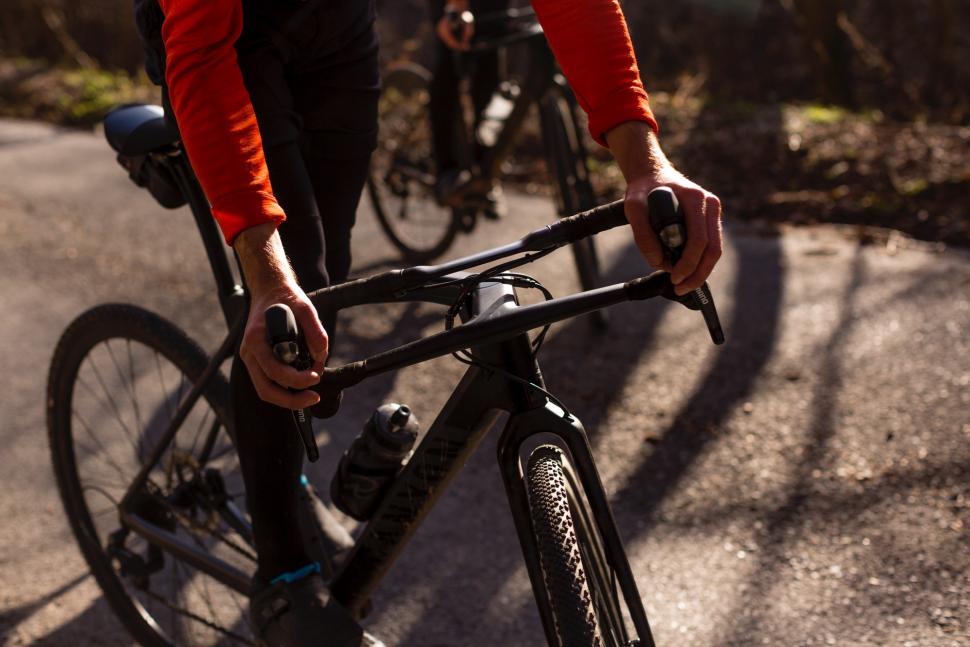
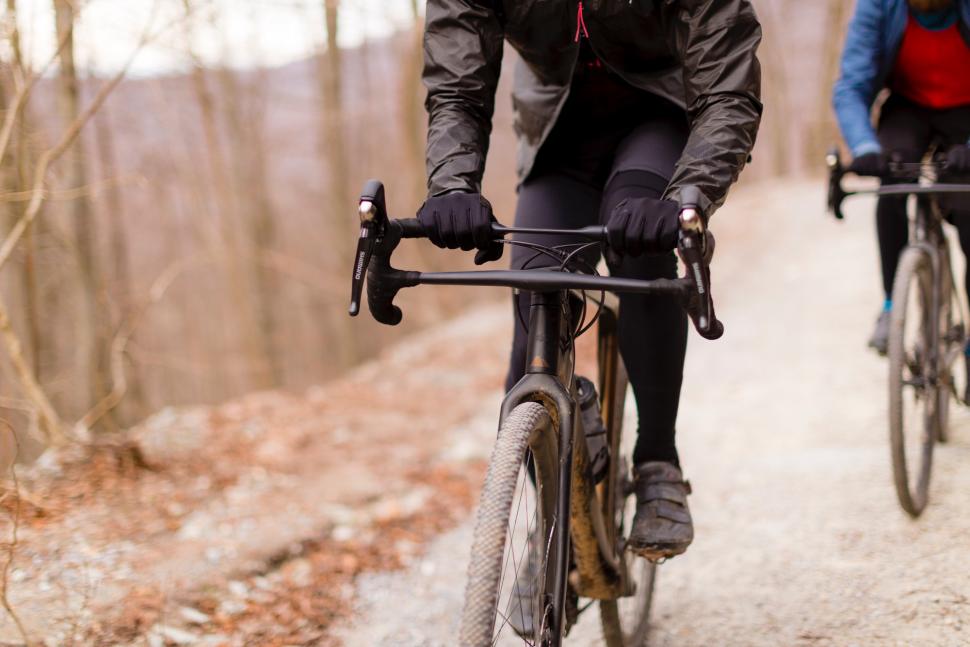
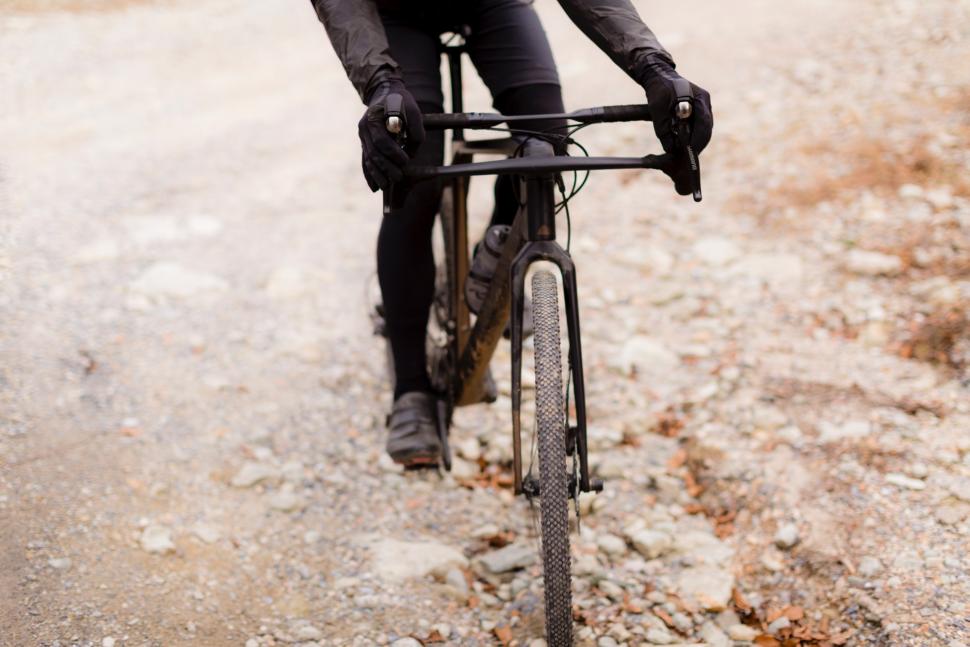

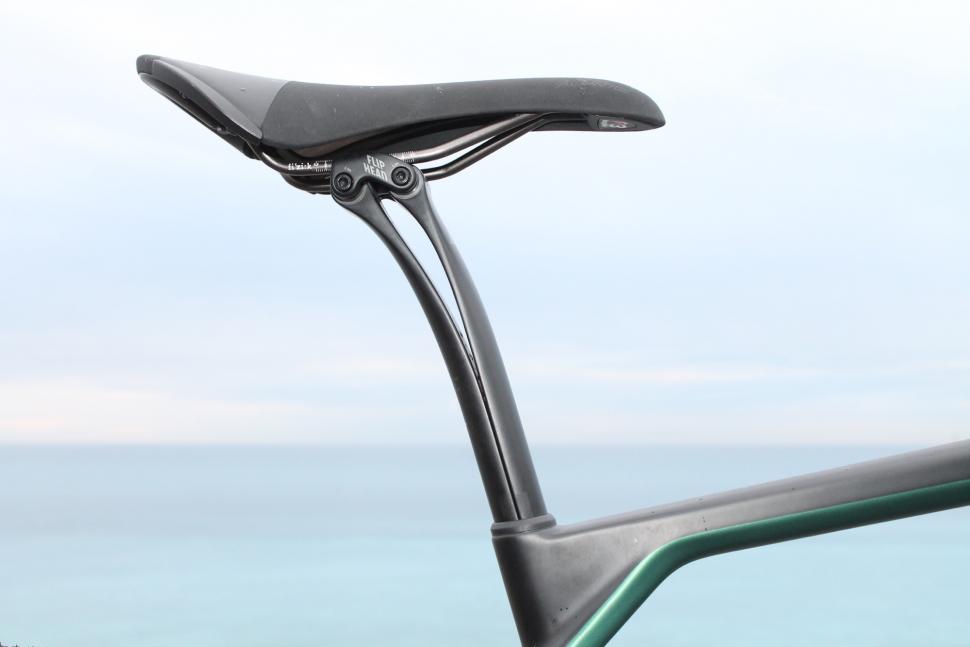


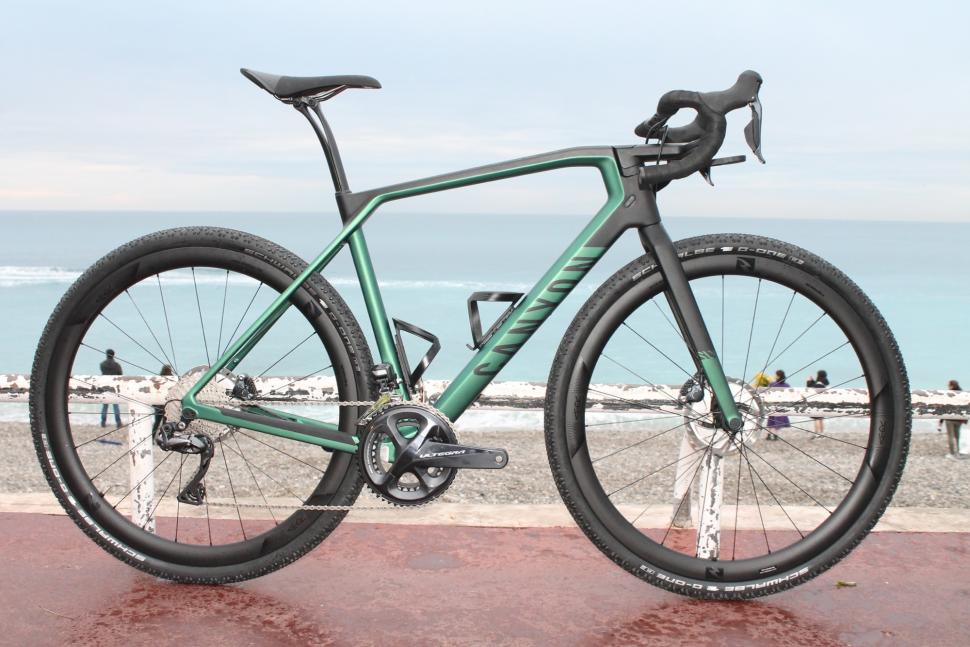
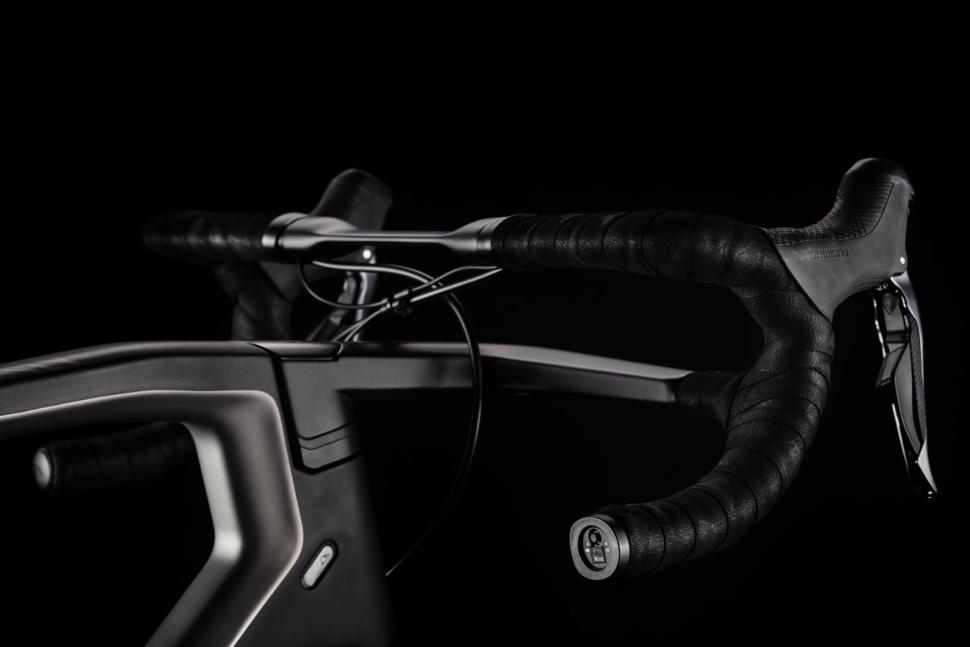
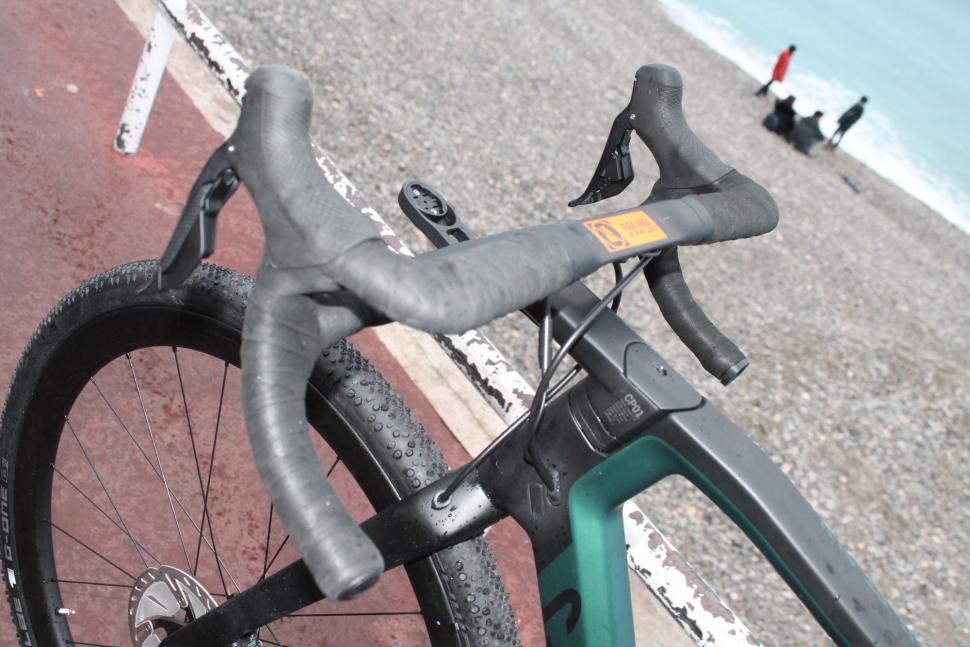
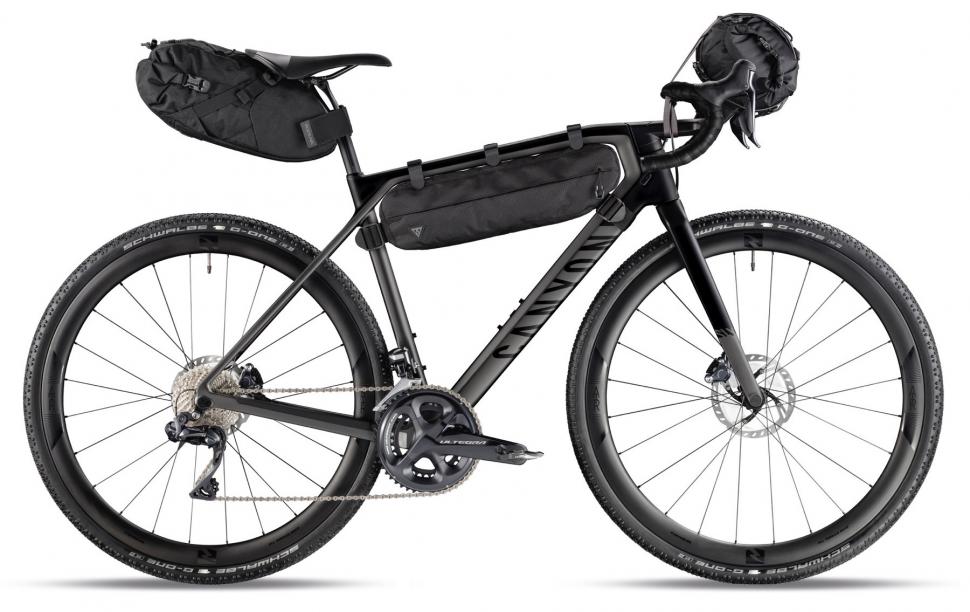
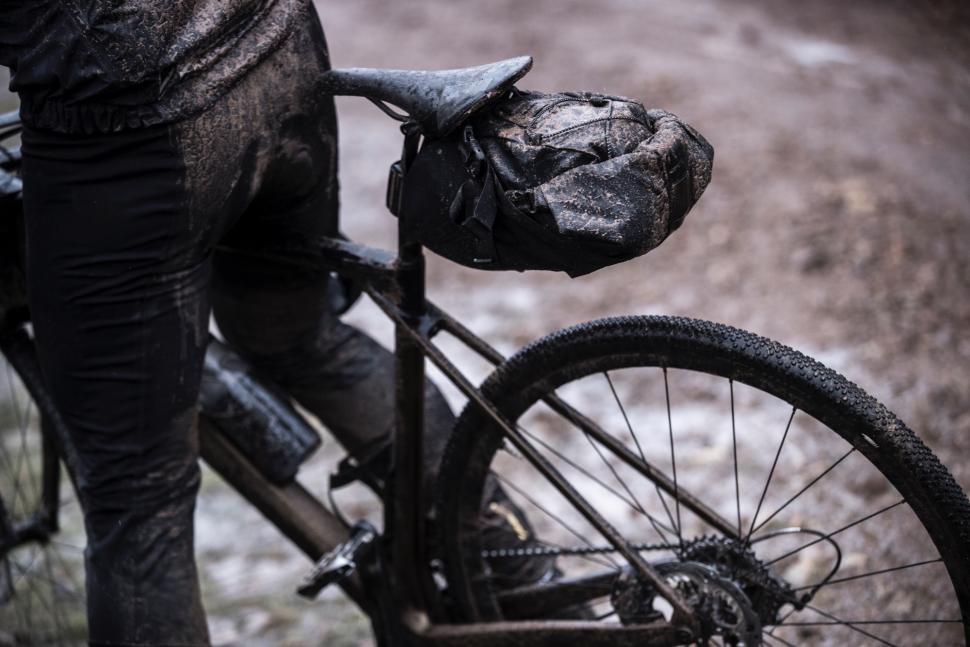
Add new comment
45 comments
It should have come off the drops, not in the bit below the shifters. Going to be pretty awkward for thumbs having that blasted extra bar joining on just where you want your hands.
Like this, but as a drop bar, if you see what I mean:
A cyclists walks into a bar...
Ouch!
You were wondering how the heck they did put the shifters there in the first place... they don't, the clamp is already there, you just have to buy shimano only. ho ho hoooo
canyon grail.png
As others said, a false premise - you don't need flex on the centre of the tops. Your hands should just rest there lightly.
Also fugly.
I'm out.
I only use the tops when i'm climbing smooth trail, I use the hoods for most riding and the drops for control during heavy braking. Am I unique in this?
I mean really, how much flex is there going to be on the tops when your hand are right on the side of the handlebars? Maybe right in the middle there might be a millimetre or 3 but where your hands actually sit? No, I dont buy it.
I mean really, how much flex is there going to be on the tops when your hand are right on the side of the handlebars? Maybe right in the middle there might be a millimetre or 3 but where your hands actually sit? No, I dont buy it.
I am seriously considering the Jones H bar for my ultimate commuter. i initially thought it looked too odd but it would appear to be the perfect front end for my yet to be built rohloffed Surly Ogre.
.
Untitled-2-1.png
My Thomson carbon bars have no flex. Perhaps if Canyon built its bars from high quality materials in the first place this wouldn't be needed.
Um... yeah...
The bar is interesting. Maybe it'll work for some people. I applaud them but think it would push me over the line to undesirable. Great that it has mounts though. Seem to have missed what the clearance is?
Not exactly sure what you're trying to get at. Your Thompson bars will have some flex but nothing significant.
I'm fairly certain that Canyon do use high quality materials and engineering, seeing as Quest Composites is one of the most respected carbon component manufacturers.
It's really easy to make super stiff carbon bars by using more carbon, what it's really hard to do is make very compliant carbon bars that are strong enough.
The idea of these bars is to give loads of comfort when riding on the tops, you can't do that using conventional bars (because they have to be strong enough to take all the riders weight).
Erm, the point is that these bars do flex to add compliance to the front end.
Good on Canyon for thinking outside the box (and for having the intestinal fortitude not to run screaming from the room shouting "f*&k me that's too ugly" immediately after being shown the first drawings of the double decker bar). I have a reservation about this (in addition to aesthetics). I get that if you are sitting on the tops with your hands in the middle you have lots of compliance on the upper deck. However, in my experience, if I am grinding along on the tops I am not going top speed and also I am not hanging on for grim death. When I am going downhill on rough stuff I want to have my fingers covering or right near the brake levers. Which probably means grabbing the hoods. Doesn't this mean that when I need the compliance offered by the upper deck the most I have to forego that compliance in order to be able to brake? Isn't this why some kind of real suspension is ultimately a better solution?
Also - why is it that in order to market "gravel" bikes bike companies need to get a bloke with a bushy beard front and centre in the photos?
^^^ This.
The solution looks clever but the underlying premise is false. For my riding, when on the rough stuff I want compliance at the widest part of the bars, where I have most control, and where I can cove the brakes. I am not interested in ultimate stiffness in the drops/hoods on a gravel bike. This is more like a sprinters' bar for the cobbled classics.
has anyone thought how the hell the shifters come off this handlebar??
you'll have to completely remove the circular collar I guess, which is quite a pain in the arse to put back on even when you don’t have the bars dangling off the back of it
It's a good idea as far as it goes - much more compliance at the front end, where road shock to the palms & wrists from shattered Blighty roads is getting more and more of an everyday hazard.
But it needs easier stem length (and perhaps angle) change, as others have noted. Also, how does one get the STI levers on and off? They wont't slide up the bars from the end of the drops, presumably.....? Such levers can be a PITA to get back together once the circlip is completely undone.
That's what I thought. In terms of engineering, it is actually a really elegant solution for adding compliance to a handlebar, I much prefer it to Specialized's Future Shock as it avoids messing around with the headset/steerer. It also exploits the unique properties of carbon in a way that no other bars do.
I can't help but wonder why they didn't simply use a Lauf fork (or something similar) to achieve the same damping.
Peak gravel?
You wish.
If riding on gravel or whatever is that bad then just get a hybrid. Job done.
If you fancy getting a hybrid but want to be able to have multiple hand positions on the bars for longer rides then just get a gravel/adventure bike. Job done.
or...gel pads under the bar tape?
Lets see if those bars get used by anyone at Paris-Roubaix... That'll be the proper test.
The UCI would have to re-write its technical regulations first.
I'm not convinced by those handlebars. Seems more like a gimmick unless it can offer a substantial amount of vertical compliance. I guess we'll have to wait for detailed testing to see if they work or not.
cant have enough hand positions
canyon-launch-2018-6.jpg
Are Gillette getting into making handlebars?
The whole thing looks like a joke, but Canyon isn't trying to add hand positions with the bottom handlebar attached section. In fact they recommend not to even put your hands down there since you could very likely damage or break your wrists during any accident which could occur. If you read the article again, their design intent is add compliance at the top cruising hand positions. IMHO, the largely proprietary handlebar and stem should make this a very minor footnote in bicycle sales and bicycle history.
Pages